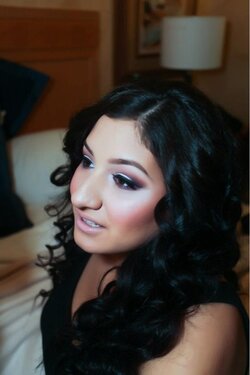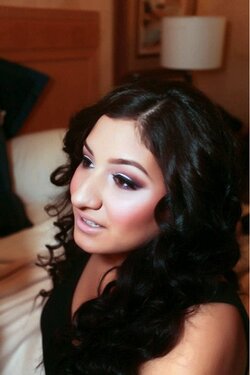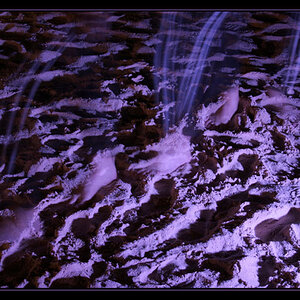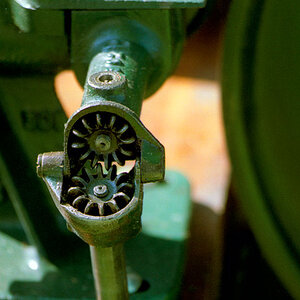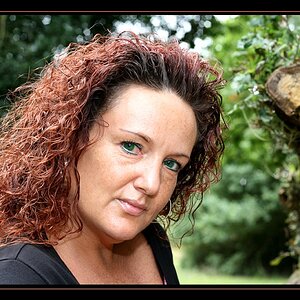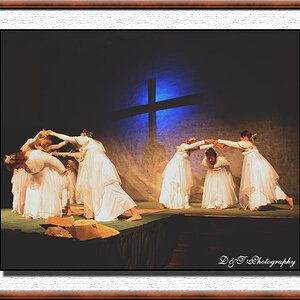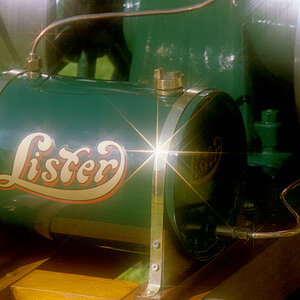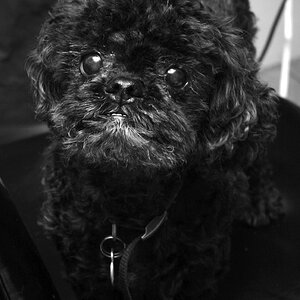MLeeK
TPF Noob!
- Joined
- Oct 20, 2011
- Messages
- 6,761
- Reaction score
- 1,380
- Location
- NY
- Can others edit my Photos
- Photos OK to edit
That's all fine and well when you are shooting for personal reasons, but when you are selling to a client who is expecting perfect, then what is your take on it?
It depends on the client, to a large degree, and as a professional I am sure you're fully aware of catering to your client's tastes and desires. If the client is relatively sophisticated and shares modern tastes, you're going to get the whites pure white, you're going to push the contrast to ridiculous levels on any black and whites, you're probably going to either over saturate or under saturate, and if you undersaturate you're probably going to push contrast into the midtones.
If you're shooting for ME, you might choose a more naturalistic rendering of the whites, letting them look bluer in the shade and warmer in the sun, and warmer still indoors.
If you're shooting for a relatively unsophisticated bride, you're going to make your photographs look as much as possible like whatever her recently married friends are likely to have seen, which is probably related to the first client's taste. Wedding dresses in particular are problematic, since you're going to want them to look white in anything formal (since the white is often the point of the dress), but you might elect a more naturalistic color balance for informals, depending on what styles are prevalent.
If you're shooting football, you might consider pushing the white balance to give night games one look, and day games another -- cooler and warmer, I suppose? I don't really know the color temp of the huge banks of stadium lights, though.
What's perfect? If your client knows and can articulate it, do that, regardless of what people on the internet say. If your client doesn't or can't, try to hit whatever the local market is doing. If that's still not enough, make it look however you think looks best.
I think you have some good points in there, but they tend to make me feel like you are still striving for a 'correct' white balance in every situation.
Let me explain: Slightly warm or cool or whatever your taste may be, you still would never put out blue, glowing orange or magenta skin tones. You aim for your whites that are in the consistent light to be white. The ones in the shade would be cool as would the opposite if you were shooting in the shade. You wouldn't take an image shot in the shade where the color is cool but has a background in the warm evening sun and make the shaded subject blue so that the background would be proper. Nor would you make the sun cool to match the tone of the subject. The sun would remain warm-or even warmer as you raise the color on your subject to be in range for proper skin tone. Will the skin tone be exactly the same as the subject's skin? Maybe to probably not. It'd be enough correct to not draw the eye thinking HOLY ORANGE DUDE or HOLY DEAD BODY!
In short I think you are right about obsessing about the white balance being slightly eggshell instead of pure is really unrealistic. As a matter of fact, many whites ARE a blue tint or a warm tint that we just don't notice unless we are able to and LOOKING for it. If you look at computer paper from several different manufacturers some will be blueish and some will be creamier. They're all white until you put them together in one report and compare.
However, that's not exactly how your post seemed. It seemed as if fixing things is kind of pointless overall when average people just plain don't see it. They may not consciously see a bad color, but they also know if something feels not right about it. It has to be within a tolerance for correct. The chances of us knowing that the person really was shaded in blues and should be blue are slim if we see a blue person.
Football, on the other hand is a whole different ballgame. Night games are a nightmare in a rainbow of color. Day games are easy if they are early, however if the sun is going down the color temp actually skyrockets for a while-BUT if I left it at say 7200K people would most definitely notice it is orange. I don't care so much about perfectly CORRECT as I care about LOOKING correct within a tolerance. A bank of football lights has a range from about 3200K to sometimes near 5000K and you can get everything in between in about one minute. Some are better than others.


